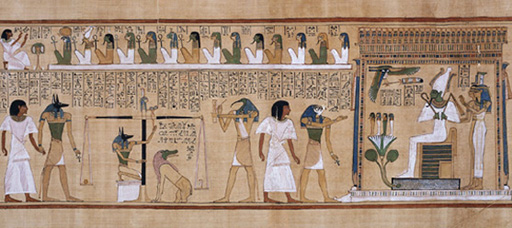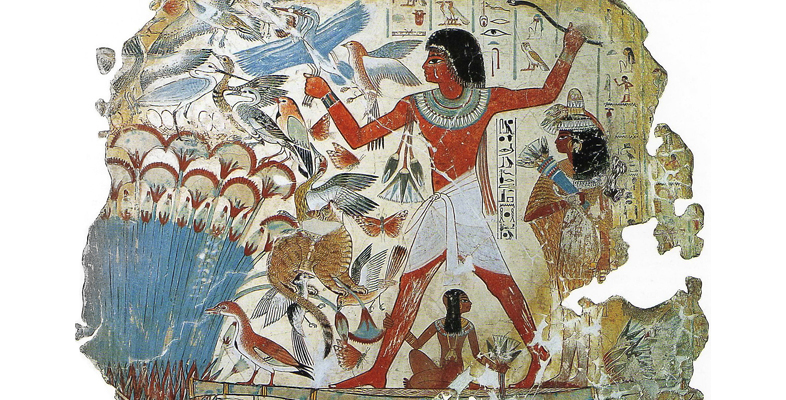2.1 Egyptian painting
If we think of painting in the context of Egyptian art we tend to think of rows of figures, facing the same way in profile almost as if stamped from a pattern. Take a look at Figure 3 and then answer the questions below.

How do you think the painting above has been made?
It has been painted on a flat surface; in this case it is a sheet of papyrus. There are outlines, which may have been drawn with a pen or a fine reed brush, and the figures are coloured in with paints applied by brushes. There is also a lot of hieroglyphic writing accompanying the visual images.
What is the subject of this painting?
To the modern viewer the actual subject will not be clear without some relatively specialist knowledge. What you can see is a row of figures, some human, some animal, some hybrids, laid out in frieze-like fashion across the same ground plane, all looking from left to right at three more figures who are raised up slightly higher. Two of these are female, while the seated figure is male.
To go beyond these basic questions, you need knowledge of ancient Egyptian art and culture: which you will begin to gain from this course.
Here is a taster. The painting in Figure 3 is a scene from the Book of the Dead of the royal scribe Hunefer. It dates from the Nineteenth Dynasty of the New Kingdom, less than a century after the paintings from Nebamun’s tomb-chapel, which form the principal subject of this course. At the left hand side, the dead Hunefer is being led to judgement by the jackal-headed god Anubis. In the centre, his heart is being weighed against the feather of truth (maat). The composite animal with the crocodile head is waiting to devour him if he is found wanting. In fact, he passes the test and is ‘justified’, which is recorded by the scribe to the gods, Thoth, with the ibis head. Further to the right, he is then led by the falcon-headed god Horus to be presented to the god of the underworld Osiris, who is sitting in a booth to receive him, flanked by the goddesses Isis and Nephthys.
